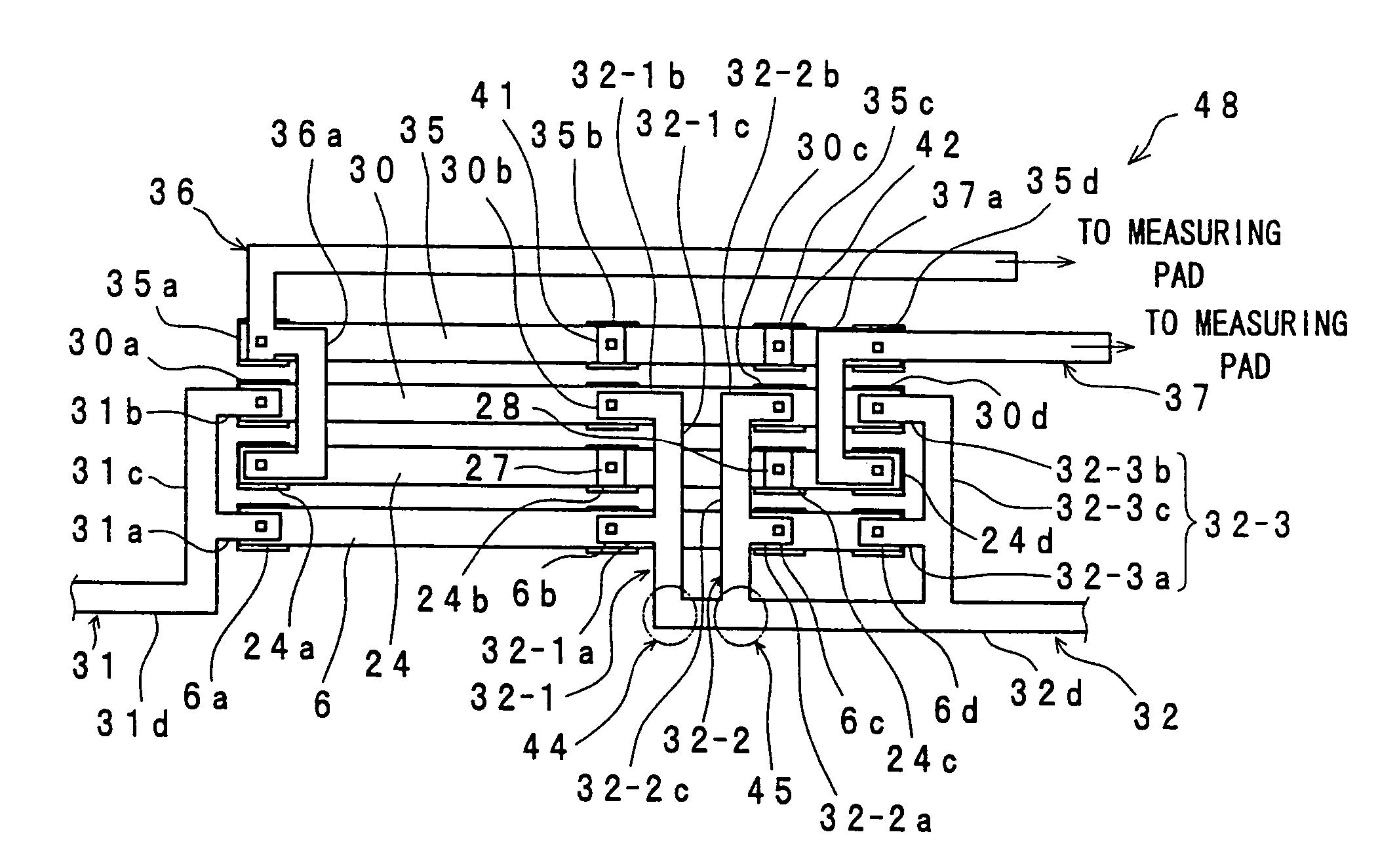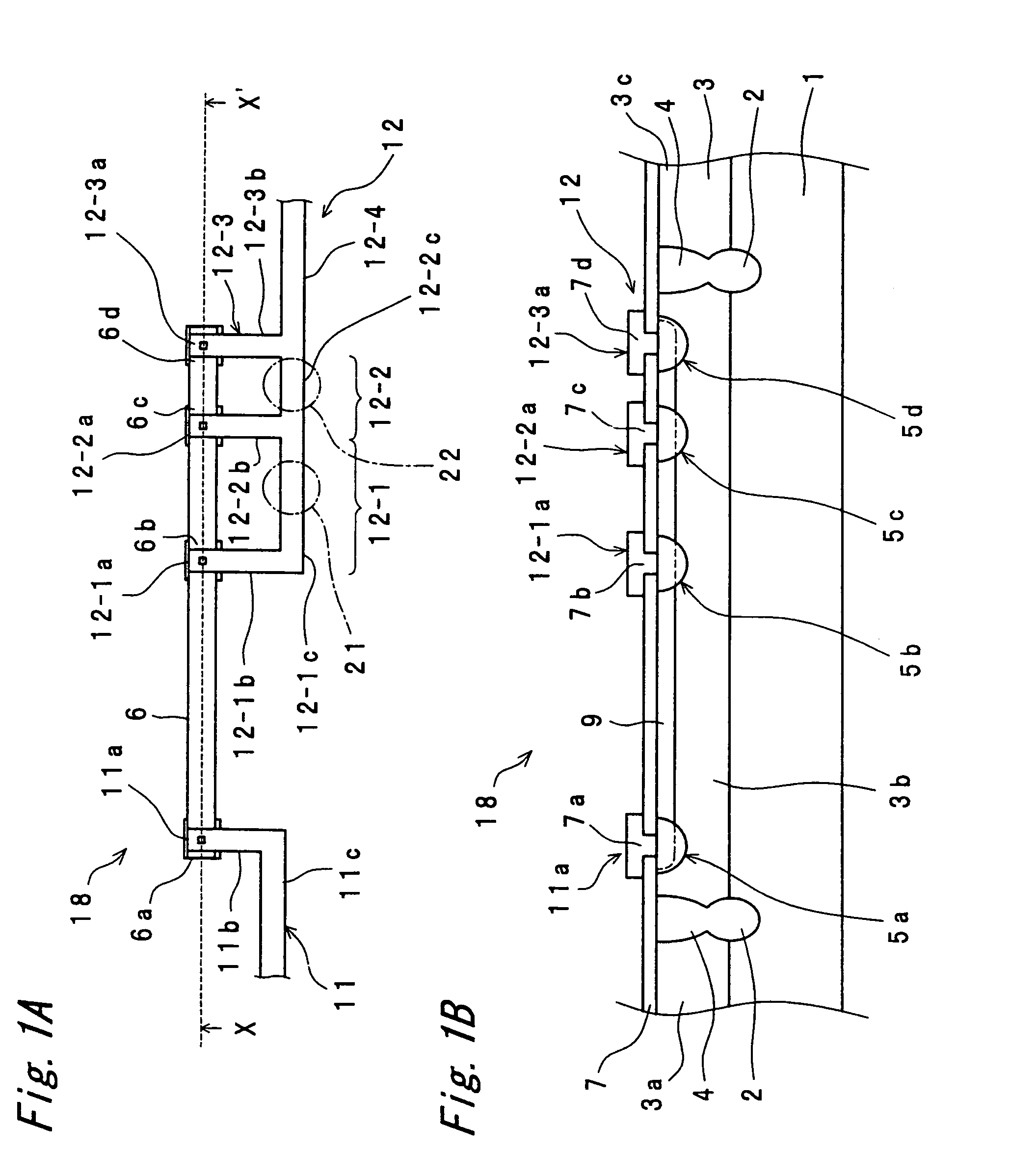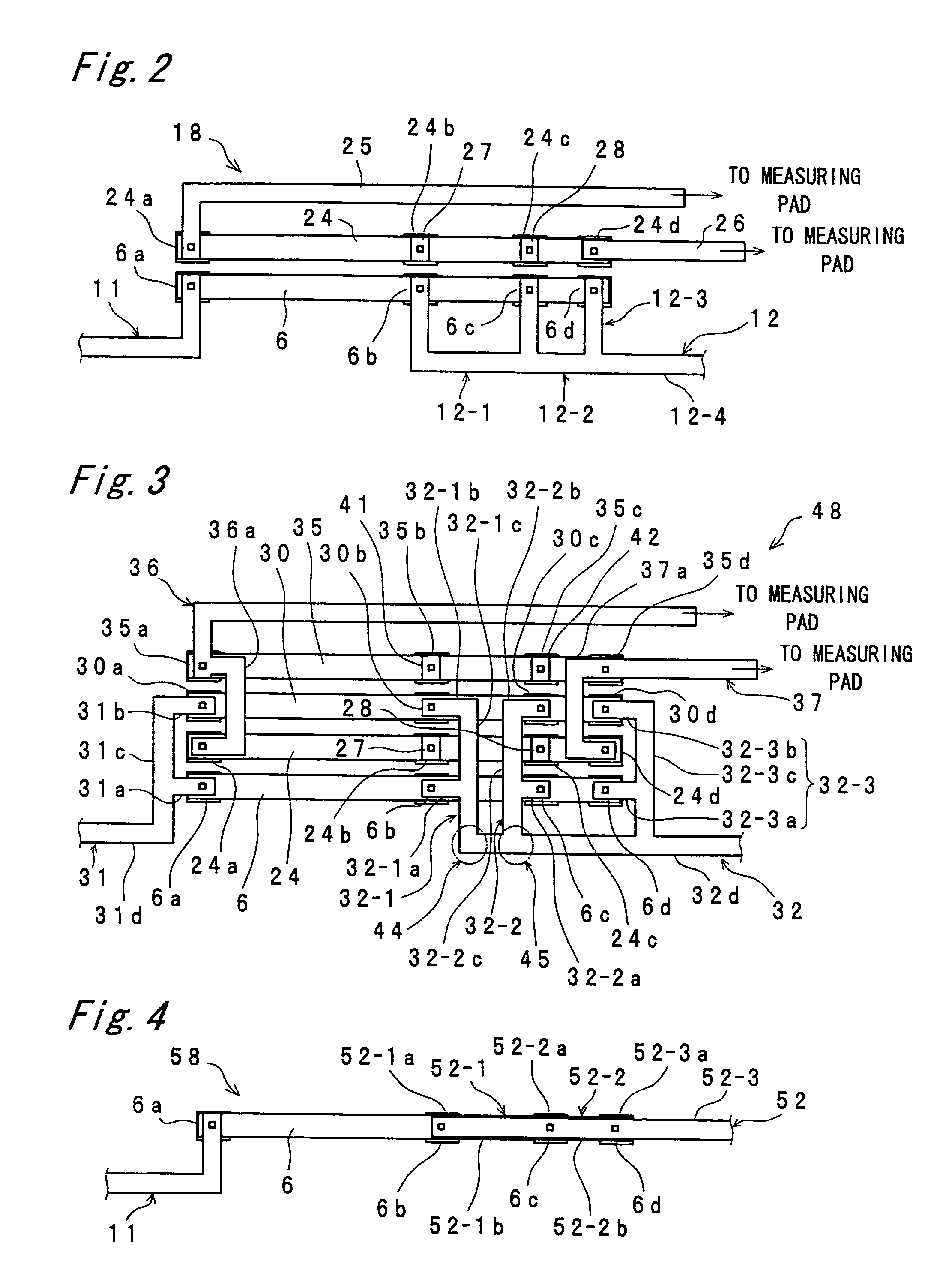Trimmer impedance component, semiconductor device and trimming method
a technology of impedance component and trimmer, which is applied in the direction of semiconductor devices, semiconductor/solid-state device details, adjustable resistors, etc., can solve the problems of product defects, inability to recover trimming, and inability to accurately trim the impedance, so as to achieve accurate and stable operation to the high-frequency signal, accurate trimming
- Summary
- Abstract
- Description
- Claims
- Application Information
AI Technical Summary
Benefits of technology
Problems solved by technology
Method used
Image
Examples
first embodiment
[0062](The First Embodiment)
[0063]A semiconductor device including the trimmer impedance component of this invention will be described as the first embodiment with reference to FIGS. 1A and 1B. FIG. 1B is a sectional view taken along the line X–X′ in FIG. 1A.
[0064]The manufacturing method of the semiconductor device of this first embodiment is now described. First of all, a p-type embedded diffusion layer 2 for element isolation is formed on the surface of a p-type semiconductor substrate 1. Next, an n-type epitaxial layer 3 is formed on the entire surface of the p-type semiconductor substrate 1, and a p-type isolated diffusion layer 4 is formed in a portion corresponding to the p-type embedded diffusion layer 2 from the surface of the n-type epitaxial layer 3. As a result, the n-type epitaxial layer 3 is electrically divided into a plurality of portions, so that the active components of transistors or the passive components of diffused resistors and capacitors are formed at the res...
second embodiment
[0083](The Second Embodiment)
[0084]Next, the second embodiment of the semiconductor device of this invention is shown in FIG. 3. This second embodiment differs from the aforementioned first embodiment in the following points of (i) through (iv).
[0085](i) A trimmer resistance component 48 that has a trimmer resistor 6 and a trimmer resistor 30 is provided in place of the trimmer resistance component 18.
[0086](ii) A first electrode 31 and a second electrode 32 connected to the trimmer resistors 6 and 30 are provided in place of the first electrode 11 and the second electrode 12 connected to the trimmer resistor 6.
[0087](iii) A monitor resistor 35 is provided in addition to the monitor resistor 24.
[0088](iv) A first electrode 36 and a second electrode 37 connected to the monitor resistors 24 and 35 are provided in place of the first electrode 25 and the second electrode 26 connected to the monitor resistor 24.
[0089]This second embodiment is similar to the first embodiment in that the m...
third embodiment
[0104](The Third Embodiment)
[0105]FIG. 4 shows the third embodiment of the semiconductor device of this invention. This third embodiment differs from the first embodiment in that a trimmer resistance component 58 having a second electrode 52 is provided in place of the second electrode 12.
[0106]This second electrode 52 is formed on the trimmer resistor 6. This second electrode 52 has a first connection portion 52-1, a second connection portion 52-2 and a third connection portion 52-3. An end portion 52-1a of this first connection portion 52-1 is connected to the portion 6b of the trimmer resistor 6, and an end portion 52-2a of the second connection portion 52-2 is connected to the portion 6c of the trimmer resistor 6. Moreover, an end portion 52-3a of the third connection portion 52-3 is connected to the portion 6d of the trimmer resistor 6. Moreover, the second electrode 52 is linearly extended in the lengthwise direction, while the first connection portion 52-1, the second connect...
PUM
 Login to View More
Login to View More Abstract
Description
Claims
Application Information
 Login to View More
Login to View More - R&D
- Intellectual Property
- Life Sciences
- Materials
- Tech Scout
- Unparalleled Data Quality
- Higher Quality Content
- 60% Fewer Hallucinations
Browse by: Latest US Patents, China's latest patents, Technical Efficacy Thesaurus, Application Domain, Technology Topic, Popular Technical Reports.
© 2025 PatSnap. All rights reserved.Legal|Privacy policy|Modern Slavery Act Transparency Statement|Sitemap|About US| Contact US: help@patsnap.com



